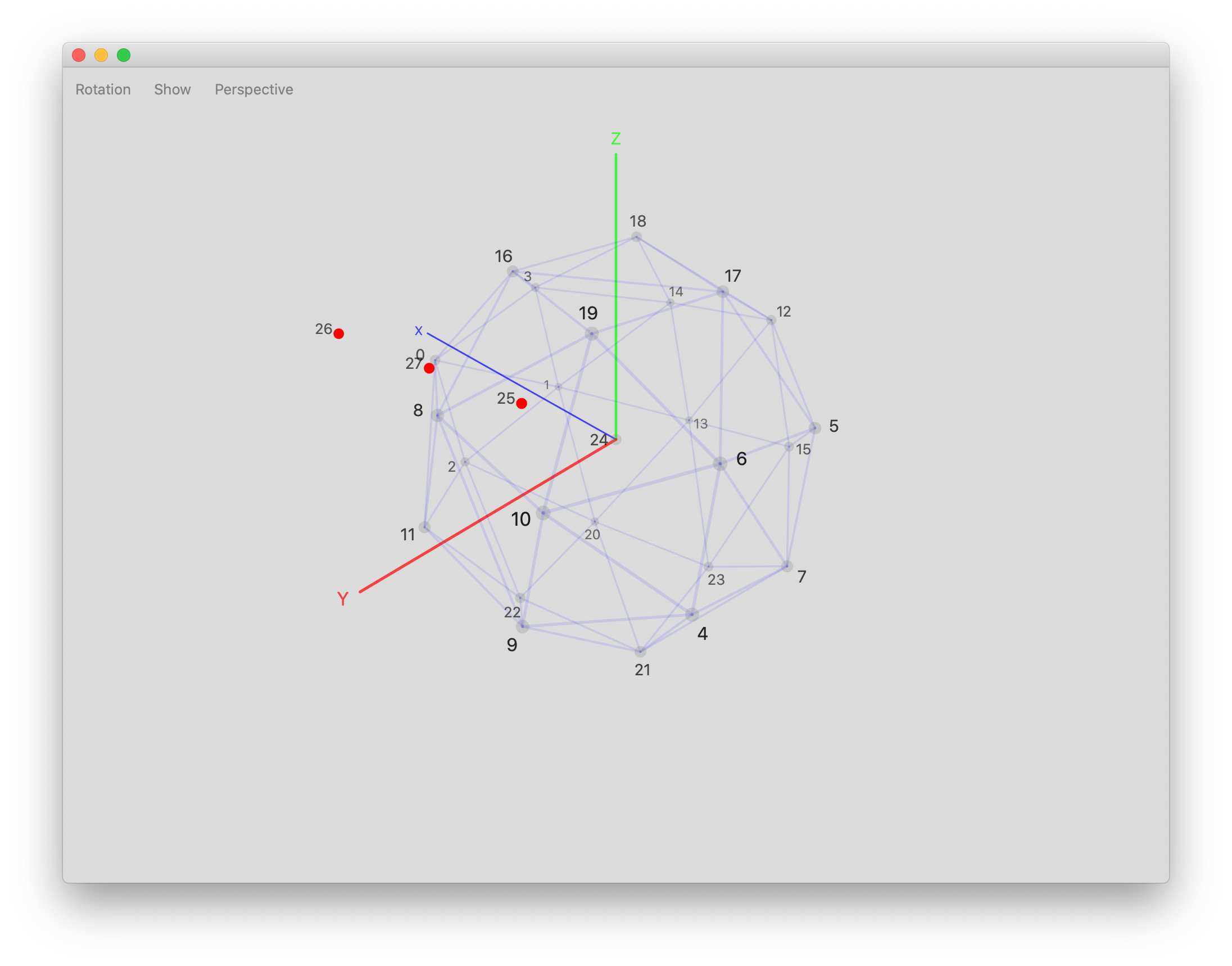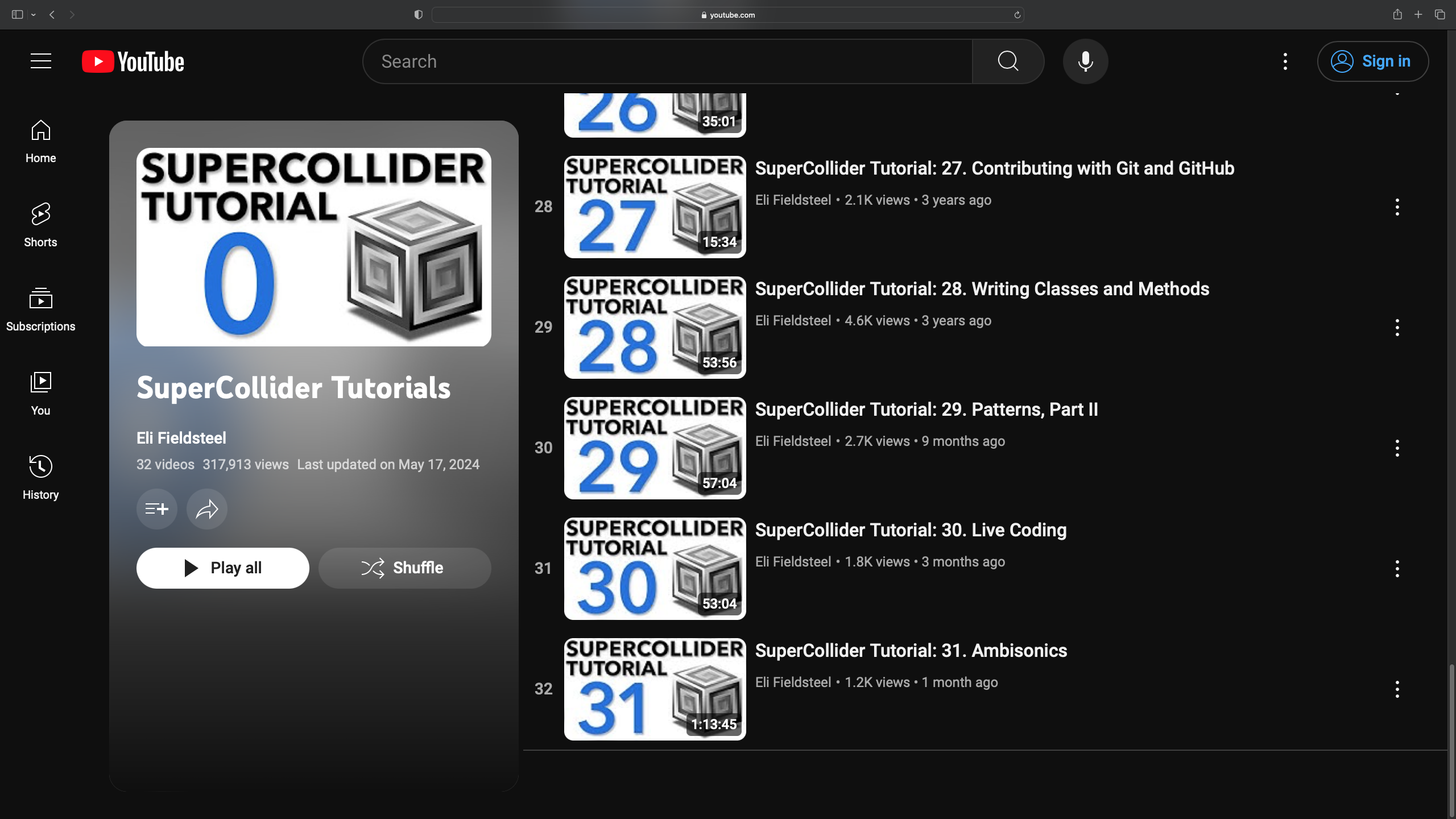Recent News
SuperCollider Tutorial: 31. Ambisonics
Posted
by Joseph Anderson
Eli Fieldsteel explores the Ambisonic Toolkit for SuperCollider in episode #31 of his popular SuperCollider Tutorials video series.
ATK for SuperCollider tutorials are found on this page.
ATK for Reaper v.1.0.0 beta 11
Posted
by Trond Lossius
ATK for Reaper v.1.0.0 beta 11 is now available for download. This is a maintenance release fixing some issues in order to ensure compatibility with Reaper v. 6.38.
Here is the list of changes:
- Pantophonic2D and Periphonic3D decoders now work with Reaper v.6.38 - #75
- Fixed typo in PsychoShelf filter, but the filter remains unstable - #78
- Speed of sound corrected from 333 to 343 m/s in Proximity and Near Field transforms - #76
Under the hood updates:
- macOS installer disk image built using more recent version of create-dmg (1.0.9)
- Updated atk-matrices to v. 1.0.0
- Updated cookdsp library to v. 0.5 - #74
Thanks to Justin Frankel for notifying us that some tweeks were required in preparation for Reaper v.6.38.
ATK-SC3 goes NFC-HOA — Hurray!
Posted
by Joseph Anderson

Out Now!!!
- ATK for SuperCollider v.5.0.2
ATK Central is pleased to announce the long anticipated arrival of the v.5.0.2 release of the Ambisonic Toolkit for SuperCollider.
Some notable features of the this release include:
- Integrated support for classic First Order Ambisonics (FOA) and modern Higher Order Ambisonics (HOA).
- Implements the Near-Field Controlled, aka Near-Field Compensated, form of higher order Ambisonics (NFC-HOA).
- Ambisonic order is merely limited by system speed, channel capacity and numerical precision rather than by design.
- Control and synthesis of the Near-Field Effect (NFE) of finite distance sources in both FOA and HOA, including radial beamforming.
- Soundfield feature sensing & analysis in instantaneous and time averaged forms.
- Ambisonic coefficients and matrices are available for inspection and manipulation in the interperter.
- Angular domain soundfield decomposition and recomposition.
- Analysis of transformer and decoder matrices.
As always, A Very Big Thanks to the SuperCollider Development Team for all the dedication and hard work!
In particular, the inclusion of access to the Boost library as part of SuperCollider 3.10.0 has meant we’re able to make the underlying numerics of NFC-HOA available in sclang.
A Game Changer?
Yeah!
NFC-HOA Numerics
Given access to NFC-HOA numerics, ATK-SC3 is now a research grade library. For instance, the behind the scenes design tasks we do here at ATK Central in other scientific computing frameworks (we use SciPy), can now be done in sclang.
Wow!
We’ve grouped these numerics, into several categories:
- Component indexing, coefficients, &c
- Radial filtering spectra & coefficients
- Radial utilities
- Matrix utilities
- Spherical design
Huh?
Ok, we see we’ve lost you here…. as a research grade library we’re now able to address tasks like:
- Designing personal binaural decoders within sclang
- Designing microphone correction filters within sclang
- Upsampling & correcting FOA RIRs to HOA within sclang
So, yeah, we think this is way cool!
(Future releases will include tutorials on these topics.)
Soundfield decomposition and recomposition

With v.5.0.2 the ATK for SuperCollider offers radial soundfield decomposition and recomposition for NFC-HOA. Know any other toolkit for artists offering this? (We don’t either.)
Here are some things we can do with this feature:
- Specify the radius at which a DAFX operates
- Synthesize a complex HOA soundfield from an FOA soundfield
- Extract, process and re-inject sources found at a given radius
Combine all this with soundfield feature sensing & analysis, the fun never ends!
How to upgrade?
Follow the installation instructions for ATK for SuperCollider.
View the full archive | Subscribe via RSS

